THE CASE FOR FIREFLY ROADS
The homeless population in California is estimated at around 180,000 and increasing every year. The 2023 Greater Los Angeles Homeless Count estimated over 75,000 homeless people in L.A. County, an increase of almost 10% from 2022. This has led to a marked increase in homeless camps in public areas. This is a health and safety problem, both for the unhoused people and the general public, as several studies have indicated at least 50% of the homeless population suffers from mental health and/or substance abuse issues.
There are court rulings that affect how cities and states can address the camps problem. The 9th Circuit Court of Appeals’ 2018 ruling determined that city ordinances prohibiting camping in public spaces violate the 8th Amendment’s prohibition against cruel and unusual punishment if the homeless individuals have no access to shelter. Recently, the U.S. Supreme Court provided a ruling in the case of City of Grants Pass v. Johnson that upholds the rights of cities and states to manage homeless encampments. Governor Gavin Newsom commented that this decision will help protect both homeless individuals and the broader public from the harms of uncontrolled encampments. This ruling will impact how cities across the United States manage homeless encampments and enforce public space camping bans, providing clarity on how cities can enforce ordinances that prohibit camping in public spaces (Governor of California) (KCBX) (Hoodline) (Governor of California).
Regardless of the ruling, new sustainable solutions are needed to address the longer-term problem of homelessness and the related mental health and substance abuse issues to reduce the homeless population.

THE CASE FOR FIREFLY ROADS
The current government programs (state, county, and city) are trying to address the problem but are focused on larger homeless encampments, miss smaller groups and individuals, and lack a holistic approach for a sustainable solution that includes housing, job and life skills training, mental health treatment, and substance abuse rehabilitation.
Through new and modified approaches, Firefly Roads aims to bridge the gaps in existing programs, offering tailored, holistic support to ensure no one is left behind.
Firefly Roads symbolizes the diverse journeys, illuminated by shimmering lights, for people seeking and needing hope, guidance, and transformation towards a brighter future. Much like fireflies that light up the darkness, each firefly represents an individual but powerful source of light in the darkness, symbolizing the assistance and support this program will provide.

About the Images
Creating these images has been a deeply personal and emotional journey for me. To respect the privacy and dignity of those we aim to help, I used AI to create them. These images represent the diverse journeys of people from all walks of life, each showing a glowing firefly in their hands that is, to me, their inner light, the light they bring to the world that captures the essence of our mission. They symbolize our belief in the innate ability of humanity to bring light and hope to others, even in the darkest times.
I hope you find these images as powerful and moving as I do. They are a testament to the strength and resilience within each of us, and I invite you to take a moment to experience the gallery. Each photograph tells a story of light, hope and transformation, reminding us that we all have a light to give.
Note on Terminology
At Firefly Roads, we use the term “unhoused” to align with current advocacy practices and to emphasize the temporary nature of the condition. We believe that housing is a fundamental human right, and this term reflects our commitment to finding sustainable solutions. However, we understand that “homeless” is a term that resonates strongly with many people, and we use it interchangeably to ensure our message is clear and impactful.

OUR MISSION
Key to the program is an outreach program to complete an initial assessment of each person, based on which the unhoused population would be categorized into four main groups, each requiring a tailored approach:
1. People who have lost their jobs or don’t have the skills to get a job: These people need training and support to get back on their feet quickly.
2. People who need mental health support and/or are struggling with substance abuse: They require varying degrees of specialized care to address their specific issues.
3. People who are violent or have a history of violence: These people are dangerous to themselves and others and need secure, specialized interventions.
4. People experiencing temporary homelessness due to economic shocks: They need immediate, short-term assistance to regain stability quickly.
Each group includes various subgroups to consider like families with children, young adults, runaways, veterans and long-term unhoused people.

TAILORED APPROACH
For Group 1 and parts of Group 2, there would be a comprehensive, trade school or University-like program offering:



TAILORED APPROACH
Mental Health and Rehabilitation
For Group 3 and parts of Group 2 that have more serious mental health issues,
focus on:

Dynamic Voluntary Registration

TAILORED APPROACH
Alternative Registration and Communication Methods
Incentives for Voluntary
Registration
Our innovative approach involves a system where homeless people can voluntarily register to receive tailored support services. This registration is designed to ensure safety, accountability and comprehensive care for those in need.


Addressing Mistrust
Non-Compliant Individuals
Conclusion
The key to making a voluntary registration system appealing is to ensure that it offers significant advantages over the existing services. By providing priority access, comprehensive support, financial incentives and personalized care, the system can attract people who might otherwise be hesitant to register. Additionally, addressing mistrust through transparency and engagement can help build the necessary trust and participation.



We are committed to respecting the human rights and dignity of all people. Our voluntary registration system is designed to encourage participation through positive incentives rather than coercion. By providing comprehensive support and addressing the root causes of homelessness, we aim to create a safer, more supportive environment for everyone.

Safety
Community and Public Safety
Zero Tolerance for Violence


The Housing Crisis Overview
Housing Crisis Challenge
California is grappling with an unprecedented housing crisis, with approximately 180,000 people experiencing homelessness across the state. In Los Angeles County alone, the 2023 Greater Los Angeles Homeless Count reported over 75,000 unhoused people, reflecting a nearly 10% increase from the previous year. This surge in homelessness has led to the proliferation of encampments in public spaces, posing significant health and safety challenges for both the unhoused and the general public. Many of these individuals are struggling with mental health and substance abuse issues, highlighting the urgent need for innovative and comprehensive housing solutions.
Existing Housing Initiatives
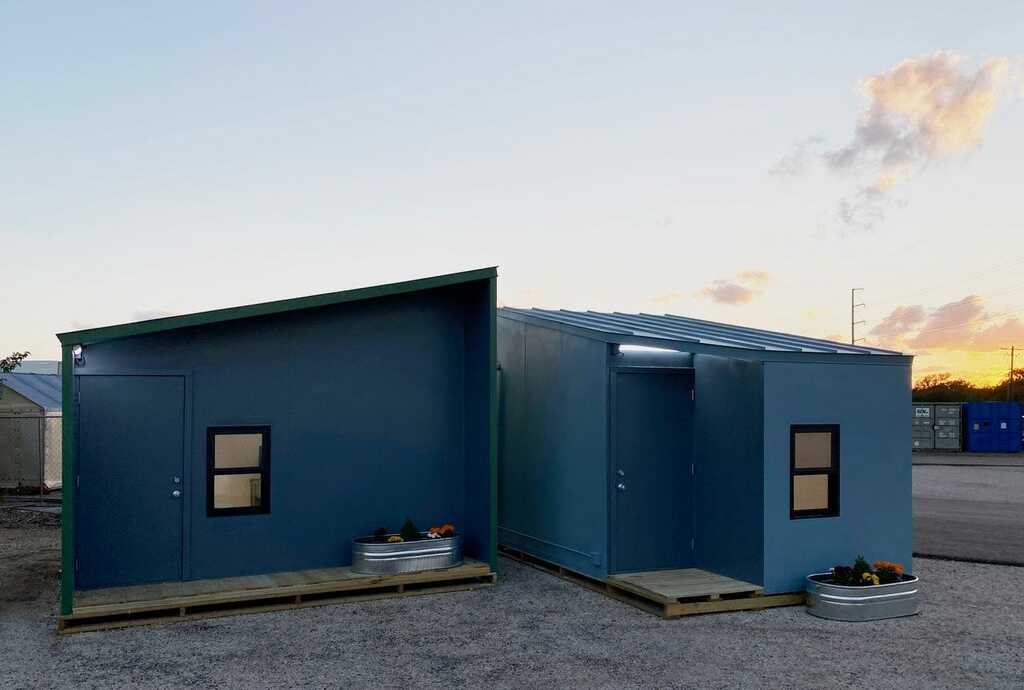
Two tiny homes from the Plugin House Company.
Courtesy of Plugin House Company.
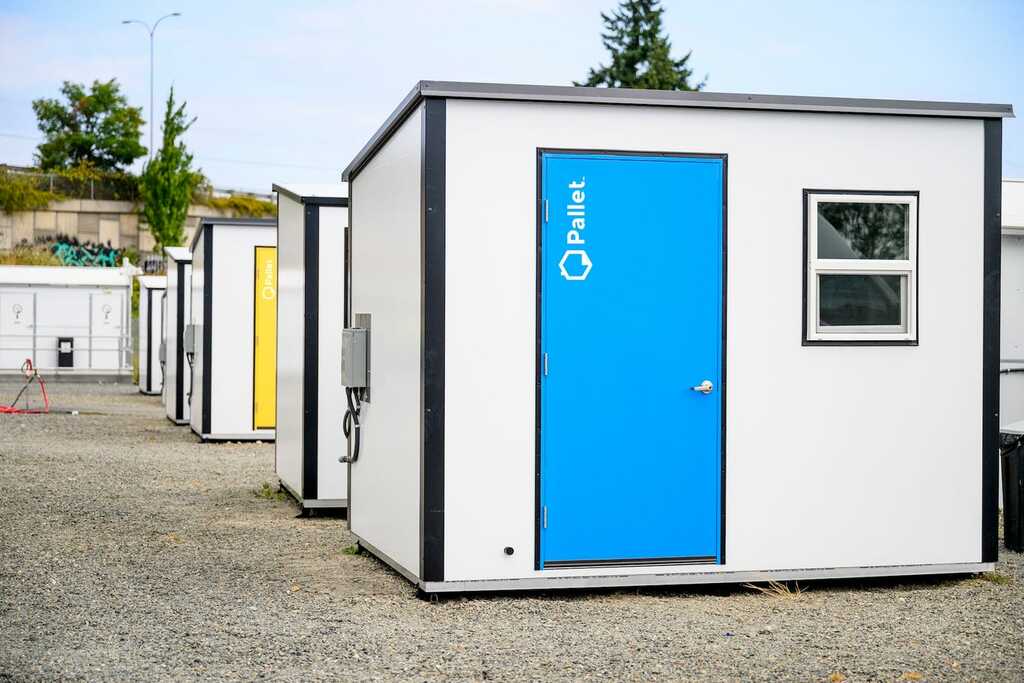
Tiny homes by Pallet in a shelter village.
Jim Meyers/ Vertizon Photo
Recently, a new high-rise apartment complex was built in Skid Row, costing nearly $600,000 per unit. This 19-story building houses 278 units (228 studios and 50 one-bedroom apartments), designed to shelter and support homeless adults. The $165 million project, funded by Proposition HHH, includes amenities like a gym, cafe, art room, music room, computer room, and library.
However, this approach has raised concerns due to its high cost and sustainability issues (Louder With Crowder) (Families for a Future).
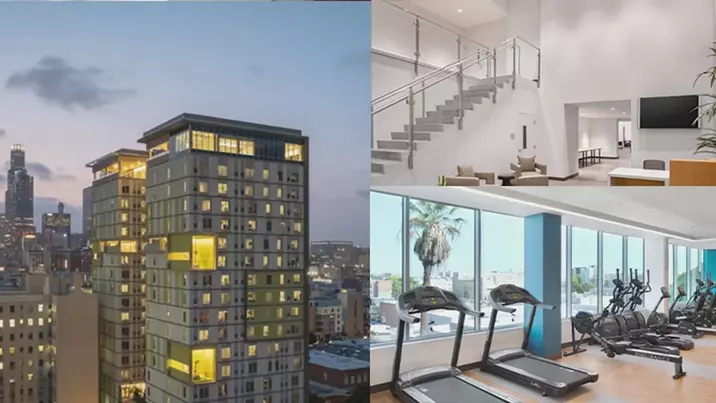
Weingart Center Tower
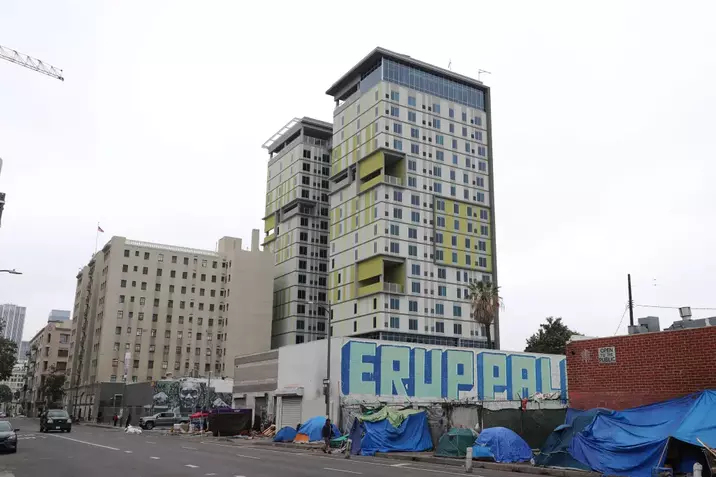
David Buchan/New York Post photo
Innovative Solution
Converting Retired Cruise Ships into Housing and Treatment Facilities
An innovative and potentially transformative approach to addressing the housing needs of the unhoused population involves repurposing retired cruise ships into treatment facilities and shelters. This idea leverages the existing infrastructure of cruise ships, which can house between 3,000 to 6,000 people per ship, to provide near-term and comprehensive support to unhoused people at half the cost of land-based alternatives.
Introduction to Concept Images
The following images illustrate the innovative concept of repurposing cruise ships into eco-friendly housing and treatment facilities for the unhoused and for people experiencing mental health challenges. These ships are designed with sustainability in mind, incorporating solar panels and green technologies to minimize environmental impact. Utilizing these ships not only provides near-term, cost-effective housing but also repurposes existing resources in an environmentally friendly manner.
The repurposed cruise ships will feature:
• Housing Units: Small private rooms providing safe and comfortable living spaces.
• Medical Facilities: Equipped with doctors’ offices, counseling rooms, and treatment areas to address physical and mental health needs.
• Community Areas: Communal dining areas, recreational spaces, and community gardens residents/patients can grow edible vegetables, fruits, and care for plants, creating a calming and hopeful environment that gives them a sense of peace and community.
• Signage and Services: Clear signage indicating the availability of various services, ensuring residents have easy access to the support they need.
• Eco-Friendly Design: Renovations include solar panels and other green technologies to ensure the ships do not pollute the environment, maintaining a clean and organized space.
These images depict a vision of repurposed cruise ships that provide a safe, supportive and therapeutic environment for those in need, highlighting the potential for a brighter future through innovative housing solutions.
Why Cruise Ships as a Preferred Option
1. High Capacity and Readiness:
• Near-term Availability: Cruise ships are ready-built facilities with thousands of individual rooms, bathrooms, kitchens and recreational facilities. This allows for a rapid deployment compared to the time and cost associated with constructing new buildings.
• High Capacity: Each ship can house 3,000 to 6,000 people, making it an efficient solution for large-scale housing and care needs. For example, using cruise ships with a capacity of 4,000 residents can address a significant portion of the unhoused population. Considering there are approximately 75,000 unhoused people in L.A. County, with around 25-50% potentially having mental health and/or substance abuse issues, eight repurposed cruise ships could provide housing and treatment for up to 32,000 of them, specifically targeting those with the most critical needs.
This approach would not only offer near-term shelter but also integrated care services, creating a comprehensive solution to support and rehabilitate a substantial portion of the unhoused population.
2. Built-In Infrastructure:
• Independent Units: The cabins on cruise ships are similar to small apartments, providing private living spaces with essential amenities. This setup can help maintain the dignity and privacy of residents.
• Comprehensive Facilities: Cruise ships are equipped with kitchens, dining areas, medical facilities, recreational spaces and more, allowing for a holistic living environment that supports both physical and mental well-being.
3. Cost Efficiency:
• Lower Costs: Retrofitting existing ships is likely to be more cost-effective than building new housing facilities from scratch. This includes savings on land, construction materials, labor and time.
• Comparative Costs: Constructing a new building to house 2,000 people in California can cost upwards of $500,000 per unit, potentially a billion dollars or more and taking 4 to 5 years to complete. In contrast, a retired cruise ship that can house 4,000-5,000 people can be acquired for $100 to $200 million, then refurbished and retrofitted to include basic medical facilities and eco-friendly technologies like solar panels at a cost estimated from $50 million to $100 million per ship. Fleet Sold at Auction. Ships to be Scrapped. This can provide near-term housing at a fraction of the cost and time of land based housing.
4. Logistical Considerations:
• Controlled Environment: Ships could be docked in Long Beach terminals or off the coast and create a controlled environment where residents can receive focused care and support. Transportation to and from the shore can be managed efficiently, ensuring residents have access to necessary services and community engagement.
• Adaptability: Cruise ships can be moved if necessary, providing flexibility in response to changing needs or emergency situations.
5. Ethical and Human Rights Considerations:
• Human Dignity: The program must ensure that living conditions uphold the dignity and rights of unhoused people. This includes guaranteeing privacy, adequate living space and access to quality healthcare and support services.
• Voluntary Participation: Participation in the program should be voluntary, ensuring that people choose to live on the cruise ships and are not coerced. Clear communication about the benefits and conditions of the program is essential.
6. Implementation and Feasibility:
• Regulatory Approval: Securing approvals from maritime authorities, health departments, and local governments is necessary. Understanding and complying with regulations regarding the long-term use of ships for housing is crucial.
• Pilot Program: Starting with a pilot program involving one or two ships can help identify and address potential challenges before scaling up the initiative.
• Partnerships: Collaboration with cruise lines, healthcare providers, mental health professionals and social services is essential for managing and supporting the residents effectively.
Queen Mary Example:
The Queen Mary, permanently docked in Long Beach, California, serves as an example of how a retired cruise ship can be repurposed. Initially a luxury ocean liner, it now functions as a floating hotel and tourist attraction. This demonstrates the viability of converting large ships into stationary facilities for various uses .
7. Economic and Social Return on Investment:
• Cost Savings: Addressing homelessness through this method can reduce long-term costs associated with emergency healthcare, law enforcement and social services.
The Queen Mary
Port of Long Beach

Unique and Transformative Solution
Eco-friendly Living Spaces and Treatment Facilities
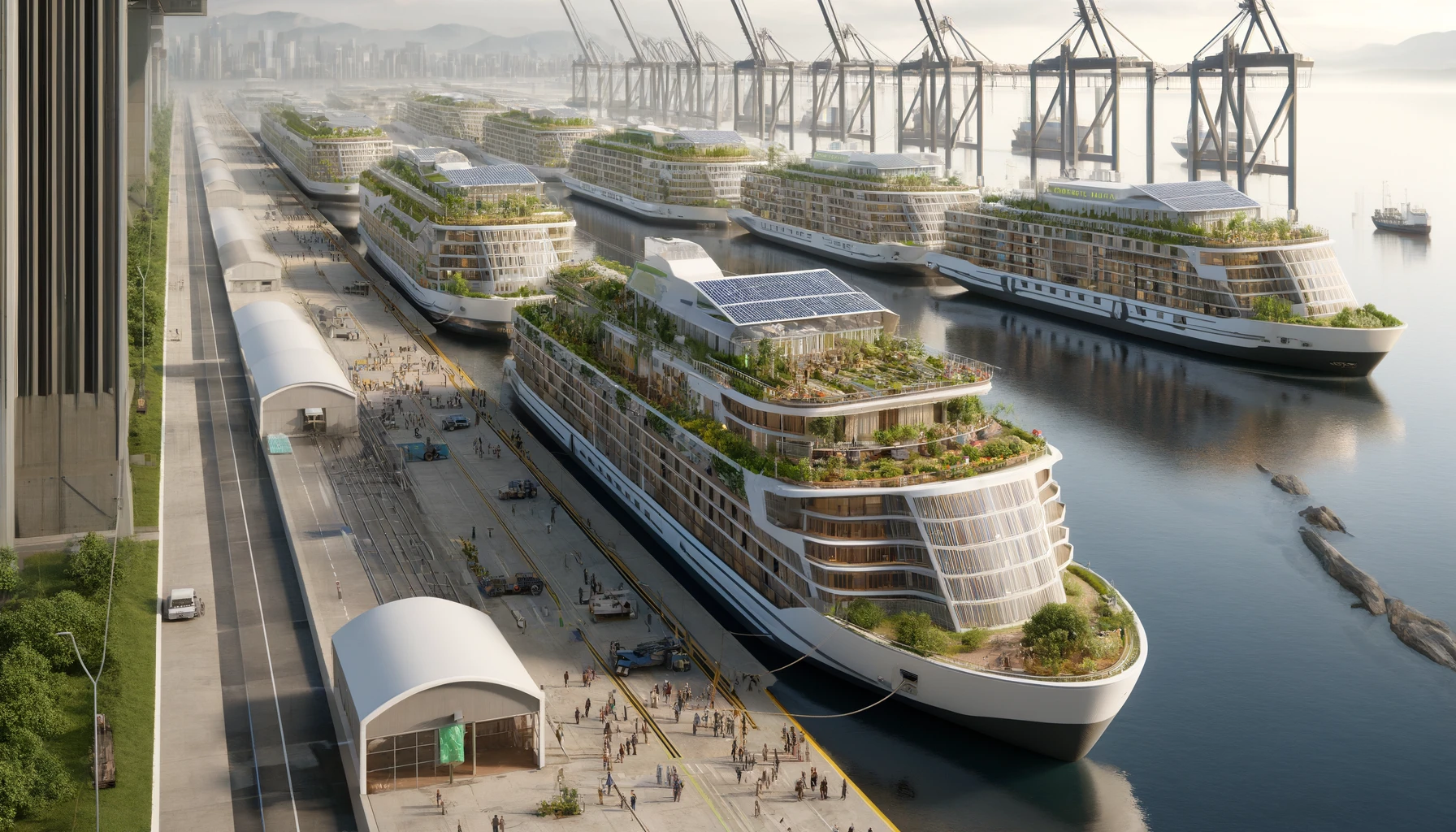
Conclusion
The concept of converting retired cruise ships into housing and treatment facilities for the unhoused presents a unique and transformative solution. With many large cruise ships being retired following the 2020 pandemic, there is a significant opportunity to acquire these vessels for repurposing before they end up in scrapyards being dismantled. For example, several ships are currently available for sale, such as those from the Seajets fleet in Greece, including former Holland America and Carnival vessels Fleet Operators , Carnival Cruise. Additionally, the Seabourn Odyssey is scheduled to leave its fleet in September 2024 and could be repurposed for such initiatives Seabourn Fleet.
Utilizing these ships not only provides immediate, cost-effective housing but also repurposes existing resources in an environmentally friendly manner. This approach aligns with sustainable practices and offers a practical, timely solution to the growing homelessness crisis. By providing a stable, dignified environment with comprehensive support services, this approach can help people recover and reintegrate into society, ultimately reducing long-term societal costs and improving community well-being.
Compared to the new high-rise apartment complex in Skid Row, which costs nearly $600,000 per unit and has raised concerns about the allocation of taxpayer money due to its high cost and luxury amenities, the repurposed cruise ships offer a more sustainable and economical alternative. While the Skid Row building provides significant amenities and support, the high cost per unit and luxury features may not be the most efficient use of public funds.
This initiative provides viable, near-term solutions to the homelessness crisis in California. The existing infrastructure and capacity of cruise ships make them a preferred option for near-term deployment and large-scale housing and care needs, compared to other solutions that require more time and resources to implement. By transforming these ships into eco-friendly living spaces and treatment facilities, we can address the critical need for housing and mental health care, while also creating a supportive, therapeutic environment that fosters recovery and reintegration, promoting a sense of community and hope, helping people on their path to recovery and stability.


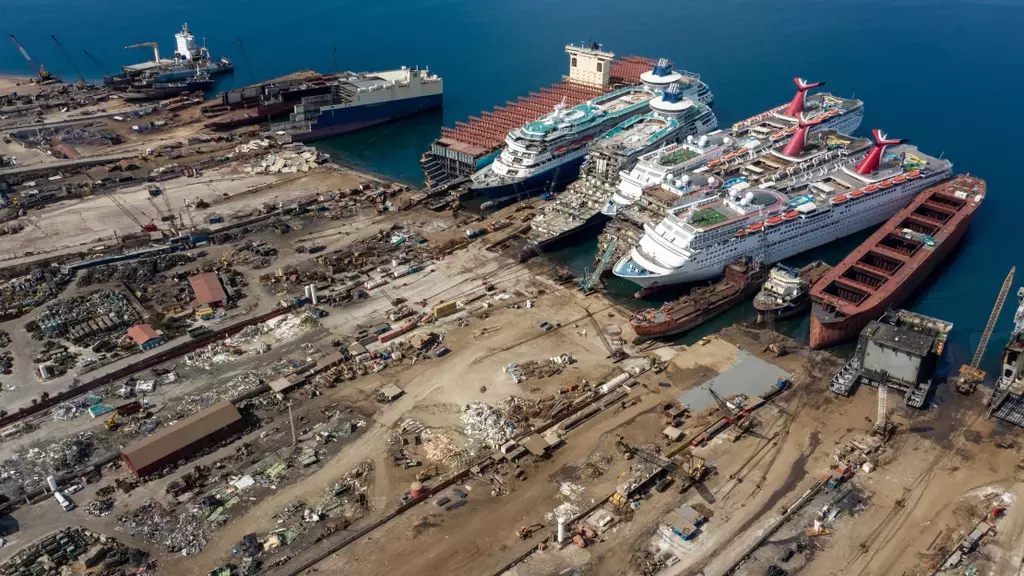
Support for Veterans
Veterans, who have bravely served their country, often face unique challenges upon returning to civilian life. Many struggle with mental health issues such as PTSD, substance abuse, and physical disabilities, which can make it difficult to find stable housing and employment. As a result, a significant number of veterans experience homelessness. The repurposed cruise ships, transformed into housing and treatment facilities, provide a comprehensive solution that addresses the specific needs of unhoused veterans. These facilities offer secure housing, access to specialized medical care, mental health services and rehabilitation programs. The supportive and structured environment helps veterans recover, regain stability and reintegrate into society with dignity and respect. This initiative not only honors their service but also provides them with the resources and care necessary to rebuild their lives and contribute positively to their communities.
Funding

1. Collaboration with Stakeholders:
Work closely with local governments, non-profits, and community organizations to ensure a coordinated and effective approach. Share and leverage existing resources and expertise to enhance the program’s impact and sustainability. Align goals and strategies with regular stakeholder meetings.
2. Pilot Programs:
Launch pilot programs in specific areas to test the registration system, gather feedback, and refine the approach. These pilots will help identify and address any issues before a broader rollout.
Conclusion
By aligning the Firefly Roads program with ongoing efforts and introducing innovative solutions, we hope to present a comprehensive, impactful proposal that addresses both immediate needs and long-term sustainability. Highlighting collaboration, technology integration and community involvement that demonstrate a well-rounded approach to tackling homelessness in California.


Comparison to Existing Programs
Los Angeles County “Homeless Initiative” and “Emergency Response”
Los Angeles City “Inside Safe” Program:
Implementing the Firefly Roads program in California and in a high-cost area like Los Angeles County will likely have a cost per person for housing and comprehensive services in the range of $40,000 to $50,000 per person per year.
This includes:
Despite these costs, the long-term savings from reduced emergency services, healthcare and law enforcement expenses can make this approach cost-effective. The success of similar models in other major cities and the significant reduction in chronic homelessness achieved in Utah demonstrate the potential for impactful results.
By leveraging data from local programs and adapting this approach to California’s unique context, Firefly Roads aims to efficiently and effectively address homelessness, providing tailored support and lasting solutions.


Investing in Lives - A Long Term Perspective
Human lives typically span 80-100 years, and at some point, many people face challenges such as homelessness or drug addiction. Investing in comprehensive support for 2 years during these crises is crucial.
This investment helps people get back on their feet as soon as possible, allowing them to continue living their lives with dignity. By providing robust support during these critical years, we can help them avoid falling deeper into cycles of addiction and chronic homelessness and instead, lead stable, fulfilling lives for the remainder of their lifespan.
This approach not only saves lives but also reduces long-term societal costs, making it a sound investment for both people and the community.

1. Integration with Existing Programs:
Firefly Roads can complement initiatives like Project Homekey and Inside Safe by focusing on additional innovative solutions such as using repurposed cruise ships as temporary housing and treatment facilities.
2. Innovative and Holistic Approach:
Leveraging technology for AI-driven outreach and dynamic registration systems, combined with a holistic approach to support services, can enhance the efficiency and effectiveness of the program.
3. Innovative Housing Solutions with Repurposed Cruise Ships:
Utilizing retired cruise ships as housing and treatment facilities, the program offers a unique and transformative approach. These ships provide high-capacity, eco-friendly living spaces with built-in infrastructure, making them a cost-effective and rapid deployment solution. By repurposing cruise ships, the Firefly Roads program can offer near-term housing and comprehensive care for thousands of people, promoting recovery and stability in a dignified and supportive environment.
4. Community and Private Sector Engagement:
Encouraging public-private partnerships and community involvement will provide additional resources and support, making the program more sustainable.
5. Cost Considerations and Savings:
Although the estimated cost per person in California is higher ($40,000 to $50,000 per person per year), the long-term savings from reduced emergency services, healthcare and law enforcement expenses justify the investment.

What makes the Firefly Roads Program Unique Compared to Existing Programs
1. Extended Support Duration:
The Firefly Roads program offers 2-4 years of comprehensive support, whereas many existing programs focus on short-term solutions.
2. Holistic, University-Like Approach:
This would mimic a university model, providing not just shelters and food but also tailored life courses, personal coaching, and mentorship. This educational and holistic approach is more in-depth than many current programs.
3. Dynamic and Active Registration System:
Mobile outreach teams with technology to proactively register and connect people with services, going beyond the more passive approaches often used.
4. Innovative and Diverse Communication Methods:
This approach includes mobile outreach teams, community kiosks, paper-based systems and a helpline, ensuring accessibility for all unhoused people, including those without smartphones or internet access.
5. Integration of Trauma-Informed Care:
• Emphasizing trauma-informed care in mental health support and rehabilitation programs addresses underlying issues more effectively than many current systems.
6. Repurposed Cruise Ships designated for Mental Health and Addiction Treatment:
• These ships will feature medical facilities equipped with doctors’ offices, counseling rooms and treatment areas to address physical and mental health needs. By providing a stable environment with comprehensive support services, the program aims to help people recover and reintegrate into society.
7. Mobile Mental Health Units:
Introducing mobile mental health units for on-the-spot counseling and psychiatric help reduces barriers to accessing care.
8. Specialized Facilities for Violent People:
• Establishing secure facilities for intensive behavioral and mental health support focuses on rehabilitation and ensures safety, an area often inadequately addressed.
• Dedicated Repurposed Cruise Ships for Violent Individuals:
One or more ships could be designated specifically for housing and treating violent people, providing secure and structured environments for intensive rehabilitation and support.
9. Dedicated Repurposed Cruise Ships for Specific Populations:
• Women-Only Ships: Creating ships dedicated exclusively to women to provide a safe and supportive environment for them.
• Veterans-Elderly Focused Ships: Designating ships specifically for veterans and elderly, ensuring they receive appropriate care and support.
• Family-Focused Ships: Ensuring that families, including those with children, have safe and supportive housing environments where they can stay together and receive family-specific services.
• Youth-Focused Ships: Offering specialized programs and support for younger unhoused teenagers and runaways, providing education, job training and a supportive environment separate from adults.
10. Public-Private Partnerships and Diverse Funding Models:
Leveraging social impact bonds, crowdfunding, and partnerships with businesses and philanthropic organizations diversifies funding sources and reduces taxpayer burden.
11. Community Involvement and Advisory Boards:
Forming a community advisory board of formerly unhoused people to guide program policies ensures they meet real needs and fosters community support.
12. Phased Implementation and Accountability:
Implementing a phased approach with pilot programs to demonstrate success, adjust strategies, and gain incremental public support, coupled with clear success metrics and regular reporting for transparency.
Optional Future Considerations
While the primary focus of Firefly Roads is to address the homelessness crisis, the innovative concept of repurposing cruise ships can be adapted for other needs. For example, these ships could be used to provide immediate housing and comprehensive support services for newly arrived immigrants and refugees. This includes legal support to help them navigate immigration processes, language education to aid in their integration, and various social services to ensure a smooth transition into their new communities. Offering a safe and structured environment while more permanent solutions are developed demonstrates the potential for broader applications of the Firefly Roads approach, adding significant value and adaptability to the program.
Conclusion
By addressing the unique needs of various groups within the unhoused population through dedicated facilities and tailored support services, the Firefly Roads program ensures a comprehensive and inclusive approach to solving the homelessness crisis. This structure not only enhances safety and specialized care but also fosters a supportive and dignified environment for all. This comprehensive and flexible approach allows for a safer and more effective way to help people recover and reintegrate into society, ultimately reducing the long-term societal costs associated with homelessness.






State - Governor Gavin Newsom:
Los Angeles County - Board of Supervisors
Los Angeles City - Mayor Karen Bass:



RECENT DATA
Based on recent data, here are the estimated figures for mental health and substance abuse issues among the homeless population in L.A. County:
1. Mental Health Issues:
• Approximately 25-30% of unhoused people in L.A. County have severe mental health issues.
2. Substance Abuse:
• About 30-50% of unhoused people in L.A. County have substance abuse problems.
3. Co-occurring Disorders:
• Many individuals experience both mental health and substance abuse issues simultaneously, often referred to as co-occurring disorders. This combined prevalence is significant among the chronically homeless population.
These figures underscore the importance of providing comprehensive care and support. Implementing holistic solutions that address both mental health and substance abuse issues can significantly improve outcomes for unhoused people, leading to higher rates of recovery and reintegration into society.
Additionally, comprehensive care can reduce the burden on emergency services, healthcare systems, and law enforcement, resulting in substantial long-term cost savings for the community.


Only together can we make this happen.